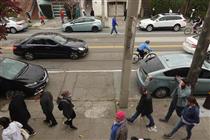Every Coronavirus Article

As a public service we interviewed every coronavirus expert from every hospital and public health department to get definitive advice on how to think about COVID-19 and navigating the current state of the pandemic.
ITHCWY: With the rise of the more infectious Delta variant, how should the vaccinated approach returning to bars, restaurants and even the office?
ECE: Great question. I think people should be asking themselves two questions. First, how vulnerable are you to infection? Do you have comorbidities brought on by having been alive for more than a few years? Do your cells accept or reject spike proteins? Second, what is your personal tolerance for badly quantified risks?
ITHCWY: What about families where the parents are vaccinated but there might be younger kids who aren't eligible?
ECE: Families are in a tough spot. As well as considering your own unknown vulnerability and appetite for risk, parents should also consider how likely their children are to get infected and the various articles they have read about unprecedented increases in vanishingly rare side effects that are overwhelming health providers at unconcerning levels.
ITHCWY: Your education and career have prepared you to quantify absolute and relative risks for infectious diseases, correct?
ECE: That's right. Not sure why you'd be interviewing me otherwise.
ITHCWY: Let's move on to outdoor risk. Last year there was a lot of talk of maintaining six feet of separation. Is this still the best advice?
ECE: It was the best advice we had available at the time. It turns out that six feet came from a Japanese marketing campaign in the '60s and has been passed on from public health expert to public health expert until the origins were entirely forgotten. The Japanese character for 6 looks a lot like a man standing to one side while a virus particle lands harmlessly next to him and so it kind of stuck. Cute, but it turns out there is little data to suggest it should be 6 feet rather than 4 or 20.
ITHCWY: So in 2021 what sort of distance should we leave when passing others?
ECE: It's a heavily populated planet. If you're moving further away from one person you're getting close to another. Instead of absolute distance I'd consider if that total stranger is vaccinated, what their hygiene habits are like, do they look like they'd cough into their elbow or directly at your face. That kind of thing. And as always you should consider your likelihood of infection from that specific person as well as the risks you've already taken and may yet take that day.
ITHCWY: More and more businesses are installing carbon dioxide sensors. Do you think this is a helpful trend?
ECE: As we all know ventilation is incredibly important in an indoor environment. It's also important that we use common sense. If you think 400 parts per million is a good level of CO2, good for you. If your spider sense thinks it should be more like 20%, knock yourself out.
ITHCWY: Is there a level of CO2 that would make you, for instance, stand up and leave a restaurant and go somewhere else?
ECE: Yes.
ITHCWY: Thanks for your time today. I'm sure our readers feel that all of their questions have been cleared up.
ECE: You're welcome.
Related Posts
You Might Also Like
(Published to the Fediverse as: Every Coronavirus Article #etc #coronavirus ITHCWY interviewed every coronavirus expert to provide the definitive advice on the state of the pandemic in 2021 so you can stop reading other articles. )

Add Comment
All comments are moderated. Your email address is used to display a Gravatar and optionally for notification of new comments and to sign up for the newsletter.